You are leaving our Website
Using an external Link:
You are now leaving our website. The following page is operated by a third party. We accept no responsibility for the content, data protection, or security of the linked page..
URL:
SC425: EC-Council™ Certified Penetration Testing Professional (CPENT AI)
Training: Security - Certification


Offensive security professionals deepen their skills in penetration testing with a focus on the use of AI. The course covers advanced tests in heterogeneous networks, IoT, cloud environments, as well as OT and SCADA systems. The training provides practical skills through more than 110 lab environments, live cyber ranges, and CTF challenges, and prepares participants for the CPENTAI certification from EC-Council™.
Start: 2026-03-09 | 10:00 am
End: 2026-03-13 | 04:00 pm
Location: Nürnberg
Price: 3.950,00 € plus VAT.
Start: 2026-06-29 | 10:00 am
End: 2026-07-03 | 04:00 pm
Location: Nürnberg
Price: 3.950,00 € plus VAT.
Start: 2026-09-28 | 10:00 am
End: 2026-10-02 | 04:00 pm
Location: Nürnberg
Price: 3.950,00 € plus VAT.
Agenda:
- Module 01: Introduction to Penetration Testing and Methodologies
- Principles and Objectives of Penetration Testing
- Penetration Testing Methodologies and Frameworks
- Best Practices and Guidelines for Penetration Testing
- Role of Artificial Intelligence in Penetration Testing
- Role of Penetration Testing in Compliance with Laws, Acts, and Standards
- Module 02: Penetration Testing Scoping and Engagement
- Penetration Testing: Pre-engagement Activities
- Key Elements Required to Respond to Penetration Testing RFPs
- Drafting Effective Rules of Engagement (ROE)
- Legal and Regulatory Considerations Critical to Penetration Testing
- Resources and Tools for Successful Penetration Testing
- Strategies to Effectively Manage Scope Creep
- Module 03: Open-Source Intelligence (OSINT) and Attack Surface Mapping
- Collect Open-Source Intelligence (OSINT) on Target’s Domain Name
- Collect OSINT About Target Organization on the Web
- Perform OSINT on Target’s Employees
- OSINT Using Automation Tools
- Map the Attack Surface
- Module 04: Social Engineering Penetration Testing
- Social Engineering Penetration Testing Concepts
- Off-Site Social Engineering Penetration Testing
- On-Site Social Engineering Penetration Testing
- Document Findings with Countermeasure Recommendations
- Module 05: Web Application Penetration Testing
- Web Application Footprinting and Enumeration Techniques
- Techniques for Web Vulnerability Scanning
- Test for Vulnerabilities in Application Deployment and Configuration
- Techniques to Assess Identity Management, Authentication, and Authorization Mechanisms
- Evaluate Session Management Security
- Evaluate Input Validation Mechanisms
- Detect and Exploit SQL Injection Vulnerabilities
- Techniques for Identifying and Testing Injection Vulnerabilities
- Exploit Improper Error Handling Vulnerabilities
- Identify Weak Cryptography Vulnerabilities
- Test for Business Logic Flaws in Web Applications
- Evaluate Applications for Client-Side Vulnerabilities
- Module 06: API and Java Web Token Penetration Testing
- Techniques and Tools to Perform API Reconnaissance
- Test APIs for Authentication and Authorization Vulnerabilities
- Evaluate the Security of JSON Web Tokens (JWT)
- Test APIs for Input Validation and Injection Vulnerabilities
- Test APIs for Security Misconfiguration Vulnerabilities
- Test APIs for Rate Limiting and Denial of Service (DoS) Attacks
- Test APIs for Security of GraphQL Implementations
- Test APIs for Business Logic Flaws and Session Management
- Module 07: Perimeter Defense Evasion Techniques
- Techniques to Evaluate Firewall Security Implementations
- Techniques to Evaluate IDS Security Implementations
- Techniques to Evaluate the Security of Routers
- Techniques to Evaluate the Security of Switches
- Module 08: Windows Exploitation and Privilege Escalation
- Windows Pen Testing Methodology
- Techniques to Perform Reconnaissance on a Windows Target
- Techniques to Perform Vulnerability Assessment and Exploit Verification
- Methods to Gain Initial Access to Windows Systems
- Techniques to Perform Enumeration with User Privilege
- Techniques to Perform Privilege Escalation
- Post-Exploitation Activities
- Exploit Windows OS Vulnerability
- Exploit and Escalate Privileges on a Windows Operating System
- Gain Access to a Remote System
- Exploit Buffer Overflow Vulnerability on a Windows Machine
- Module 09: Active Directory Penetration Testing
- Architecture and Components of Active Directory
- Active Directory Reconnaissance
- Active Directory Enumeration
- Exploit Identified Active Directory Vulnerabilities
- Role of Artificial Intelligence in AD Penetration Testing Strategies
- Module 10: Linux Exploitation and Privilege Escalation
- Linux Exploitation and Penetration Testing Methodologies
- Linux Reconnaissance and Vulnerability Scanning
- Techniques to Gain Initial Access to Linux Systems
- Linux Privilege Escalation Techniques
- Module 11: Reverse Engineering, Fuzzing, and Binary Exploitation
- Concepts and Methodology for Analyzing Linux Binaries
- Methodologies for Examining Windows Binaries
- Buffer Overflow Attacks and Exploitation Methods
- Concepts, Methodologies, and Tools for Application Fuzzing
- Module 12: Lateral Movement and Pivoting
- Advanced Lateral Movement Techniques
- Advanced Pivoting and Tunneling Techniques to Maintain Access
- Module 13: IoT Penetration Testing
- Fundamental Concepts of IoT Pentesting
- Information Gathering and Attack Surface Mapping
- Analyze IoT Device Firmware
- In-depth Analysis of IoT Software
- Assess the Security of IoT Networks and Protocols
- Post-Exploitation Strategies and Persistence Techniques
- Comprehensive Pentesting Reports
- Module 14: Report Writing and Post-Testing Actions
- Purpose and Structure of a Penetration Testing Report
- Essential Components of a Penetration Testing Report
- Phases of a Pen Test Report Writing
- Skills to Deliver a Penetration Testing Report Effectively
- Post-Testing Actions for Organizations
Objectives:
The course SC425 EC-Council™ Certified Penetration Testing Professional (CPENT AI) aims to provide participants with advanced penetration testing techniques such as Double Pivoting, Binary Exploitation, and IoT penetration testing methodologies. Furthermore, hands-on exercises are offered through Cyber Range simulations, Capture-the-Flag challenges (CTFs), and more than 110 labs to sharpen participants' skills in realistic scenarios. Another objective of the course is the development of custom exploits and the automation of security analysis using artificial intelligence (AI).Participants learn to perform penetration tests on hybrid networks, SCADA/ICS systems, and cloud environments and to create professional security reports with concrete recommendations for action for corporate management. CPENTAI places particular emphasis on the combination of theoretical knowledge and practice-oriented skills to comprehensively prepare for real security assessments.
Target audience:
The course SC425 EC-Council™ Certified Penetration Testing Professional (CPENT AI) is designed for:IT security professionals, penetration testers, ethical hackers, and cybersecurity specialists who want to expand their skills in analyzing, assessing, and securing complex networks. It is ideal for experts who are pursuing a career in offensive security and Vulnerability Assessment and Penetration Testing (VAPT).
Prerequisites:
To be able to follow the content and learning pace of the course SC425 EC-Council™ Certified Penetration Testing Professional (CPENT AI) effectively, we consider the following prerequisites necessary:
- Due to the comprehensive and demanding course content, prior participation in the course SC415 EC-Council™ Certified Ethical Hacker - CEH Elite v13 or equivalent qualification or corresponding practical experience is strongly recommended.
- At least two years of experience in the field of information security.
- In-depth understanding of network security concepts such as firewalls, VPNs, IDS/IPS systems and VLANs.
- Practical experience with penetration testing tools such as Metasploit, Nmap, Burp Suite and Wireshark.
- Basic knowledge of programming languages such as Python, Perl, PowerShell, Ruby, Metasploit and JavaScript for customizing exploits and scripts.
- Understanding of attack methods such as Buffer Overflow, SQL Injection and XSS.
To achieve the full learning effect from the course week, approximately two weeks of engagement with the course content before course start is strongly advised. We also recommend intensive follow-up of the course week and extensive exercises before the examination date is scheduled.
Description:
The course SC425 EC-Council™ Certified Penetration Testing Professional (CPENT AI) by EC-Council™ is one of the world's most comprehensive hands-on penetration testing courses. It provides a complete methodology for conducting security assessments and combines advanced penetration testing techniques with the utilization of Artificial Intelligence (AI). Participants learn how to automate processes with innovative AI tools, simulate real-world cyber threats, and identify vulnerabilities.The workshop is specifically designed to deliver skills that extend far beyond basic penetration testing. This includes conducting tests in heterogeneous network architectures, IoT systems, cloud environments, and even critical OT and SCADA infrastructures. Participants also learn to create security reports that are actionable and precise for stakeholders.
Through hands-on exercises in over 110 lab environments, live cyber ranges, and CTF challenges (Capture the Flag), the CPENTAI prepares participants for real-world security testing and provides them with the capability to operate as versatile offensive security experts.
Other Info:
The examination for the course SC425 EC-Council™ Certified Penetration Testing Professional (CPENT AI) is a completely hands-on examination that tests participants' skills in real-world scenarios. Here are the key details:
- Examination format: 100% performance-based and hands-on examination.
- Duration: Optional 24 hours consecutively or across two sessions of 12 hours each.
- Report submission: Participants must submit a detailed penetration testing report within 7 days after the examination.
- Dual certification: With a score above 90%, participants additionally receive the Licensed Penetration Tester (LPT) certification.
Guaranteed implementation:
from 2 Attendees
Booking information:
Duration:
5 Days
Price:
3.950,00 € plus VAT.
(including lunch & drinks for in-person participation on-site)
Exam:
The exam is optional and included in the price.
Appointment selection:
Authorized training partner
Authorized training partner
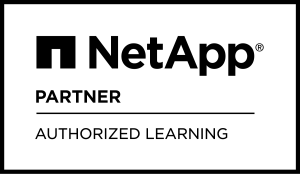


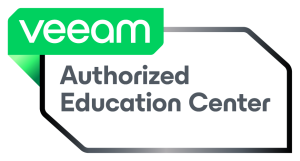
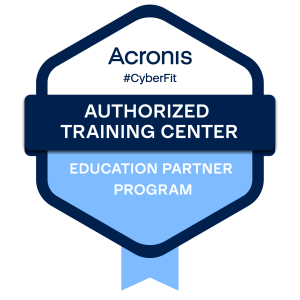





Memberships
Memberships
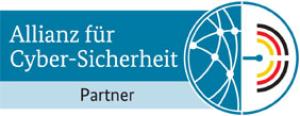


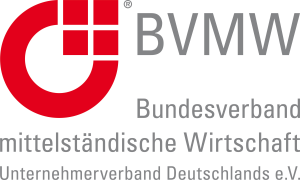

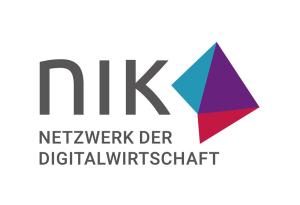


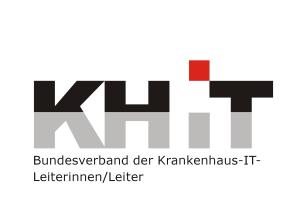




Shopping cart
SC425: EC-Council™ Certified Penetration Testing Professional (CPENT AI)
was added to the shopping cart.

